Hotels in Golden Sands
Natural Park Golden Sands
The park lies 17km. north of Varna, near the Golden Sands resort. It was created in 1943 and covers an area of 1320 ha. According to the IUCN the park is V-th category protected area.
The forests of the park go along the sea coast, surround the Golden Sands resort and in the south touch the forests of the town of Varna.
The relief is hilly, terraced and sliding. Vertical rocks mark the boundary between the sliding areas and the plateau. From these vertical rocks to the sea there are steep ridges. Some of them are: Aladja monastery – Gorno germe, Chiplak tepe – Golden Sands, and Kaleto – Bialata stena.
In the southern part of the park there are natural swampy areas (marshlands). They never dry up, even during the hottest summer months because of the underground waters that provide the marshlands with water. The average altitude is 110m, and the highest point in the park is 269.3 m above the sea level.
On the territory of the park there are 5 tourists routes with different difficulty and duration. The routes pass through old fountains, places for rest, and places that disclose fantastic panorama of the sea.
The administration of the Natural park offers numerous services, such as experienced guides for the routes, educational programs, alternative tourism, and organization of green schools.
The flora of the Natural park “Golden Sands” includes about 500 species of higher plants. Among them the rare plants and those threaten with extinction (21 species) are of the greatest significance.
Trees and bushes occupy 90% of the territory of the park and contribute to its unique landscape. Mixed broad-leaved forests are the prevalent type and oriental Hornbeam, Turkey Oak and Hungarian Oak are the dominant species. There are also silver lime trees, flowering ash, horn beams, maple and others. There are also species of longoz plants – field ash tree, cerris (oak), white poplar, alder tree and others. From the herbaceous species there are horse-tail, orchid, lily of the valley and many others. There are also rare species such as thin veined wormwood and flat-leafed mayweed, as well as species under protection and threatened with extinction such as winter snowdrop, Caucasian primrose, orchid and many others.
In the Natural park live 2 species of amphibian, 8 species of reptiles, 78 species of birds, and 25 species of mammals. There is a rich diversity of reptiles. Among them under protection are grass snake, tortoises and others. The most typical are the blackbirds, thrushes, titmouse, woodpeckers, jays, buzzards and others. From the birds of prey there are buzzards, big hawk, awls, forest owlet and etc.
The mammals are represented by the foes, deer, wild boar, squirrel, hare and etc.
There is a diversity of insects in the park. The most attractive are the stag-beetle, and the butterfly red admiral and others.
The cultural heritage of the park includes monuments from Ancient times and the Medieval period. In the territory of the Natural park Golden Sands there are lots of historical monuments situated: Aladja Monastery – a medieval rock monastery (13 – 14 century), proclaimed a National monument of culture in 1957, Katakombite (“The Catacombs”), located 800 meters southwest of Aladja Monastery - a group of caves situated at 3 different levels, a basilica and an ancient fortress dating back to 4 – 7 century in the place of Kaleto, and remnants of Slavonic settlement in the place of Kozgun cheshma.
Hotels in Golden Sands





- Admiral Hotel
- International Hotel Casino & Tower Suites
- Melia Grand Hermitage
- Poseidon Beach Resort hotel




- Allegra Balneo and SPA hotel
- Apollo SPA Resort
- Aqua View Hotel
- AquaClub Grifid Hotel Bolero
- Argisht Partez
- Astera Spa Hotel
- Astoria Hotel
- Atlas Hotel
- Berlin Golden Beach Hotel
- Berlin Green Park Hotel
- BSA Holiday Park hotel
- Continental apartments
- Continental hotel
- Dolce Vita Sunshine Resort
- Elena Hotel and Wellnes
- Excelsior Hotel
- Golden Beach Park Hotel
- Golden Line Hotel
- Grifid Encanto Beach
- Grifid Hotel Arabella
- Grifid Hotel Marea
- Grifid Hotel Metropol ADULTS ONLY
- Grifid hotel Vistamar
- Havana Hotel
- Helios Spa & Resort hotel
- HVD Viva Club
- Ibis Styles Golden Sands Roomer Hotel
- JOYA Park complex
- Kristal Hotel
- Lilia hotel
- Luna Beach Hotel
- Madara Park Hotel
- Marina Grand Beach
- Mimosa Sunshine Hotel
- Mirabelle (ex Edelweiss) Hotel
- Moko Beach by Grifid /ex.Morsko Oko Garden
- Odessos Park Hotel
- Orchidea Boutique Spa Hotel
- Palm Beach Hotel
- Palma Hotel
- Prestige Deluxe Hotel Aquapark Club
- Prestige Hotel and Aquapark
- Royal Hotel
- Shipka hotel
- Sofia Hotel
- Sunrise Hotel
- Sunshine Magnolia & SPA
- Vemara Beach Hotel (ex Kaliakra Palace)



- Amphora Palace
- Bendita Mare apart-hotel
- Detelina
- Glicinia hotel
- Gradina Hotel
- Grifid Hotel Foresta ADULTS ONLY
- Kamchia Park Hotel
- Kini Park Hotel
- Ljuljak
- Paradise Green Park Hotel & Apartments
- Park hotel Bellevue
- Perla Hotel
- Perunika
- Preslav
- Tintyava Park Hotel
- Vezhen Hotel


- Cabacum Plaza Beach Apartments
Places to go in Golden Sands
Deals & discounts in Golden Sands
- Bed only
- Bed & breakfast
- Half board
- Full board
- All Inclusive Light
- All inclusive
- Ultra All inclusive
News from Golden Sands
- Beach holiday with kids at Bulgaria’s Black Sea coast
- Beach holiday with pets and kids at Bulgaria’s Black Sea
- How to choose best hotels at Bulgaria’s seaside
- Beach holidays in Bulgaria – affordable prices and unforgettable experiences
- How to choose the best hotel at Bulgaria’s Black Sea coast
- Summer travel destinations 2013 – Bulgaria in the spotlight
- Cheap beach vacations in Bulgaria this September
- All Inclusive beach holiday: the survival tips
- Bird watching in Golden Sands resort
- The number of tourists in Bulgaria will increase this year
- Growth of the number of German tourists in Bulgaria
- Restaurants don’t have clients due to the popularity of All inclusive packages
- Bulgarian hotels offer up to 30% price reductions at the end of the season
- Hotels on Northern Black Sea coast drop prices in the end of summer
- Bulgarian beaches are observed from the air
- Arabian tourists return to Bulgarian beaches
- Golden Sands ranks in Top 10 hottest beach resorts in Europe
- British tourists are satisfied with Bulgaria’s Black Sea hotels
- Bulgaria is second famous summer destination for Russians
- Better tourist season 2011
- Hot summer emotions and exciting beach vacations
- Bulgaria expects a growth of 20% of the number of German tourists
- 80 % of Bulgarians prefer local sea resorts
- Bulgaria Said to Offer Best-Value Summer Tourism Packages in EU
- Burgas and the surroundings offer interesting summer
 Member of:
Member of:

















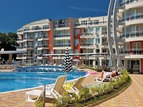

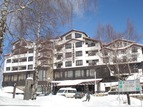

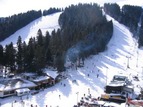


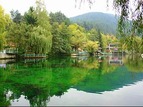
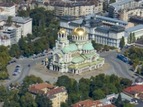


 Touroperator
Touroperator
